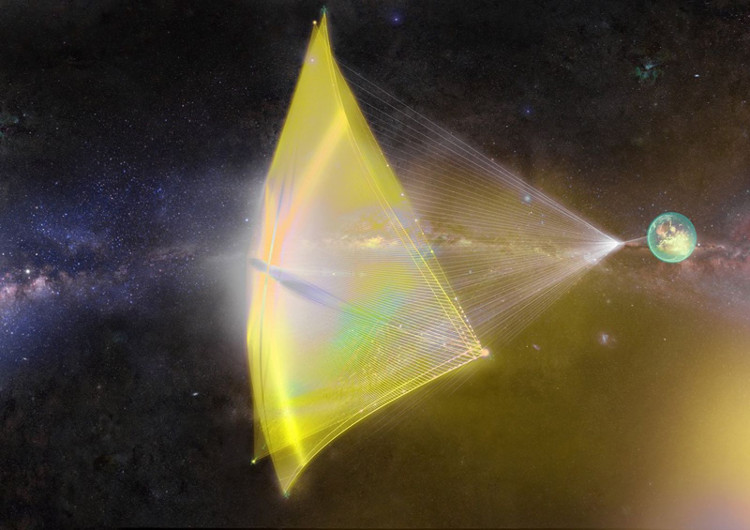Space sailboats use lasers to travel at extremely fast speeds
A sailboat that operates with laser light can help a satellite globe travel across the galaxy to gather information about distant lands in space. This is the result of research by Harvard University scientists and engineers.
After the invention of the laser in the 1960s, scientists came up with the intention to use these high-energy rays to accelerate the speed of the spacecraft to almost the speed of light. shining. Since then open the possibility of interstellar travel.
"However, the development of this idea so far is still quite limited," said Professor Avi Loeb, Starshot Project Director. A boat powered by laser light was sent to Alpha Centauri star system. Recently, Starshot has transmitted to Earth data of a rather strange planet named Proxima b.
"Breakthrough Starshot" project hopes to bring tiny robots to Alpha Centauri system, 25,000 billion miles from Earth. If these stars come by normal means it will take 30,000 years, the project will shorten the time to only 20 years.
These "nano" spacecraft include cameras, propulsion, battery power and navigation devices, tiny touches, all mounted on a small plate forming a fully functional spacecraft. The tiny spacecraft only the size of an iPhone will enter the universe using "solar sails" powered by a beam of powerful laser light.

Simulate a laser-powered space sailboat shot from Earth.(Image source: Harvard University).
This design will allow them to fly at a rate of 25% of the speed of light (about 134 million miles an hour), and take about 4.22 years to transmit signals to Earth. Before these devices came into being, scientists had to create all the important parts on the ground, including building light projectors to power rockets and a "mother ship" that could carry All this device into space.
According to Professor Hawking, the biggest limitation now is the big gap between the Earth and the planets. But now humans can overcome the light beams and the lightest spacecraft. Starshot will take 20 years to get there and about 4 years to inform the Earth about the success of the trip.
If an Earth-sized planet orbits Alpha Centauri, Breakthrough Starshot will try to concentrate ships within an astronomical unit (150 million km) of that planet. From this distance, 4 cameras of Breakthrough Starshot can capture a high quality image to analyze the planet's surface. This fleet will have about 1000 ships, and these ships will be very small (named nanocraft because it weighs only a few grams). They will be propelled by ground-based lasers with a capacity of 100 gigawatts.
Each nanocraft will transmit data back to Earth with a compact laser communication system available on board. Former director of NASA's Ames Research Center, Pete Worden is the head of the project. The executive board also has cosmologist Stephen Hawking, physicist and venture capitalist Yuri Milner as well as Facebook CEO Mark Zuckerberg. Milner's cost norms are between $ 5 and $ 10 billion.
- Decoding super-fast stars in 'Ngan river'
- Cheap space travel
- Space explorer with $ 100,000
- Alien travel
- Shoot lasers to clear cosmic trash
- NASA: This is a great time for space travel
- Space tourism: Dangerous for the Earth?
- Do you want to travel the universe? According to NASA astronaut, don't be foolish!
- The first woman to travel on space
- Beer for space travel
- NASA began to launch the most important experiment for space travel
- Space travel with balloon
 Van Allen's belt and evidence that the Apollo 11 mission to the Moon was myth
Van Allen's belt and evidence that the Apollo 11 mission to the Moon was myth The levels of civilization in the universe (Kardashev scale)
The levels of civilization in the universe (Kardashev scale) Today Mars, the sun and the Earth are aligned
Today Mars, the sun and the Earth are aligned The Amazon owner announced a secret plan to build a space base for thousands of people
The Amazon owner announced a secret plan to build a space base for thousands of people